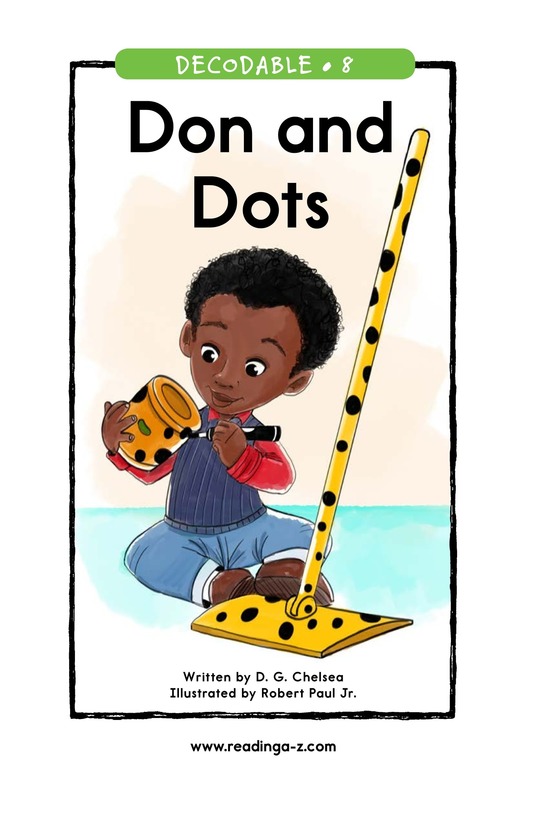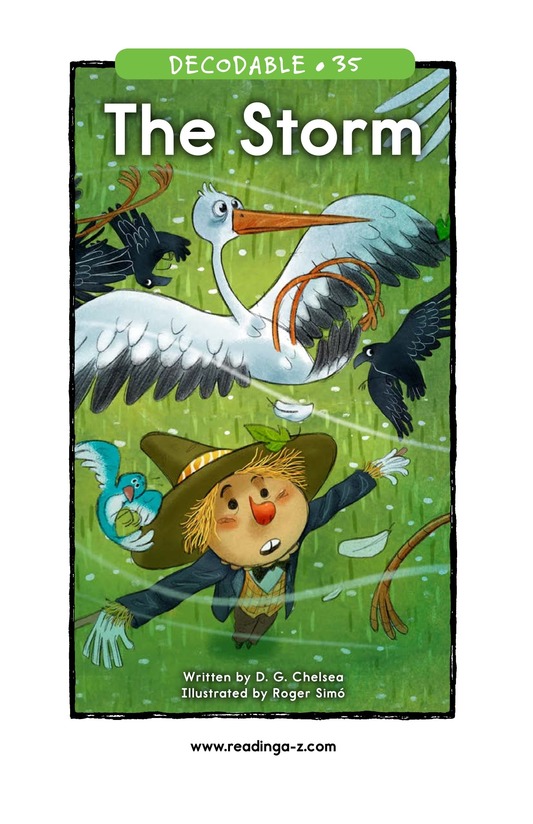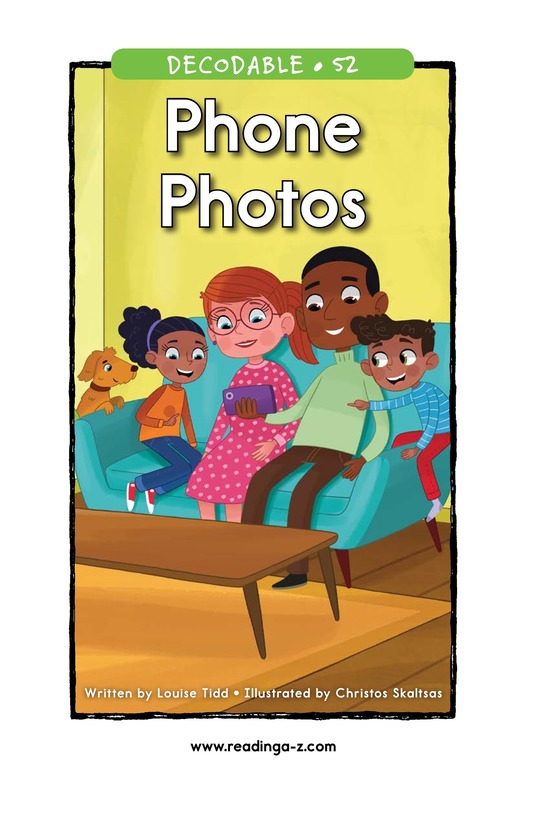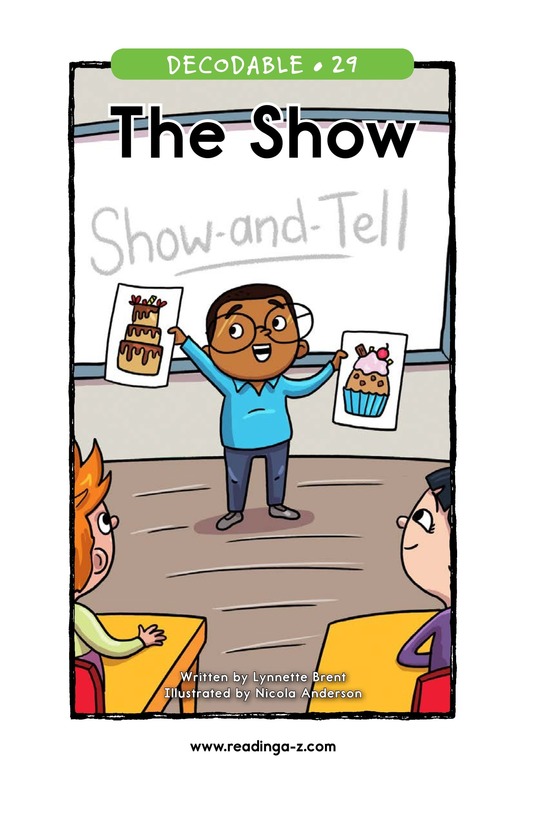As you embark on your Science of Reading journey, you may become extremely familiar with the Simple View of Reading. Developed by Phillip Gough and William Tunmer in the 1980s, the Simple View of Reading was one of the first models of its time to explore the process of reading acquisition and the must-haves required to read proficiently. Per this model, which has been validated by a number of research studies, reading comprehension can be achieved by ensuring that decoding skills and language comprehension skills are known.
Decoding (D) X Language Comprehension (LC) = Reading Comprehension (RC)
As you can see in the formula above, the variables of D, Decoding, and LC, Language Comprehension, are not added together, but rather they are multiplied to emphasize that if one variable isn’t present, reading comprehension cannot occur. As you work to refine decoding, a key component of this informative equation, you may find yourself needing the help of decodable books. Keep reading to find out why.
The Importance of Decodable Books in Early Reading
The tech landscape has evolved a lot in the past 10 years. At first, it was “Wow! Look at all the bells and whistles!” However, the focus has evolved to providers asking how we can use digital capabilities to improve the learning experience — not just because it’s available or new but because it delivers real value.
Decodable books are crucial to the development of early readers as they help students:
- Promote the practice of decoding skills rather than encouraging students to rely on images, predictable texts, or guessing
- Reinforce phonics skills and explore letter-sound relationships in alignment with your phonics scope and sequence
- Apply letter-sound relationships to recognize High-Frequency Words (HFW) and reinforce knowledge of High-Frequency Words that have been taught by seeing them used in real, high-interest texts
- Develop automaticity and refine fluency and prosody
When used in conjunction with an explicit, systematic, Science of Reading-aligned approach to literacy instruction, decodable books ensure that early readers are set up for literacy success. While decodable books for early readers begin by using words and sentences that are simple in structure, these same books progressively introduce text with increasingly complex structures as students advance, providing a challenge to motivate your students and help them continue to grow. In time, this will allow students to encounter new texts confidently, armed with the skills they need to decode, allowing them to continue to refine key foundational literacy skills to become proficient readers.
Choosing the Right Decodable Books for Your Students
Choosing the right decodable books is just as important as the decision to incorporate decodable books into your Science of Reading-aligned curriculum. As you determine which decodable books are right for your students, here are a few suggestions that can help you narrow down your options:
- Consider your phonics scope and sequence: Selecting the right decodable books depends heavily on the letter-sound patterns that have been taught in the classroom. Take a look at the book you may want to incorporate and determine if the patterns featured in that book align with your lessons.
- Ensure a balance of decodability and novelty: While decodable books are intended to promote the development of decoding skills, you also want to ensure that the text includes new words to create a richer reading experience. To accomplish this, review the vocabulary in the book, identify words that may be unfamiliar, and determine if those words are too complex or if they are in alignment with what your students are currently reading. Decodable books should include some new words that present a developmentally appropriate challenge but are not so difficult that they discourage students from wanting to read.
- Hone in on what your students enjoy: Instilling the joy of reading involves taking into account the academic functionality and interests of your students. As you determine which decodable books will suit the needs of your classroom, consider student interests to ensure that students feel excited and motivated to read.
- Story and structure: We’ve all seen decodable books that are overly simplified, focusing exclusively on including decodable words that align with a certain letter-sound relationship rather than also offering an engaging storyline. Make sure that the topics within the book are interesting to your students and that there is some sort of storyline for them to follow to increase their familiarity with literary elements while keeping them engaged.
- Expose your students to different genres: Help your students explore the subtle nuances of varying genres by exposing them to both nonfiction and fiction texts.
Integrating Decodable Books Into Classroom Lessons
Decodable books are versatile, as they lend themselves to a myriad of activities. If you are currently looking for ways to integrate decodable books into your classroom, we can help! Here are a few ways you can integrate decodable books into your classroom to refine key foundational skills while making reading feel more like fun!
- Point and read paired activity: Help students continue to gain the confidence to decode words by pairing them with a peer to allow one student to point to a section of the text while the other student reads. When implemented with clear guidelines, students can use this activity to decode words, refine fluency and prosody, and feel a little less anxious than they would during a read aloud with the whole class.
- Mapping out unfamiliar words: If students encounter words with irregular spellings, it can be very helpful if the teacher presents the sounds involved in that word and prompts students to map it out. During this activity, you can separate students into small groups of 3-4 to decrease any pressure on them while encouraging them to write out the letters of that word and write out the phonemes, or individual sounds, that comprise the word. This will help students as they encounter new, more challenging texts to decode words of increasing complexity.
- Taking an illustrative approach: There’s no better way to evaluate your students’ understanding of the meanings of words than to have them apply those words to written and illustrated art. To do so, ask your students to select a few words that align with your phonics lessons. Then, ask them to write a sentence or two that incorporates those words and illustrate the meaning of those sentences however they see fit. Arts Integration is a powerful tool that can truly demonstrate the understanding of a new word, so let your students have fun with this!
Free Decodable Books by Learning A-Z
At Learning A-Z, we understand the importance of strengthening key literacy skills, such as decoding, which is why we offer a collection of decodable books in Raz-Plus, our award-winning solution for Science of Reading-aligned instruction for K-5 students. If you’re looking for decodable books to fuel your Science of Reading journey, look no further! Searchable by skill or genre, the decodable books in Raz-Plus offer plenty of tools to reinforce the letter-sound connection. Here are just a few free decodable books you can download today.
Decodable Books: Your Pathway to Fluent Reading
When paired with explicit, systematic, Science of Reading-aligned instruction, decodable books can be a powerful tool to give students opportunities to practice the phonics skills they have learned and support them in becoming more fluent, proficient readers. As you consider where to source your decodable books from, we encourage you to learn more about Raz-Plus.
Nurture Early Readers With Raz-Plus
Sign up for a free trial of Raz-Plus to access more decodable books and refine key foundational skills in your classroom!
Sign Up





